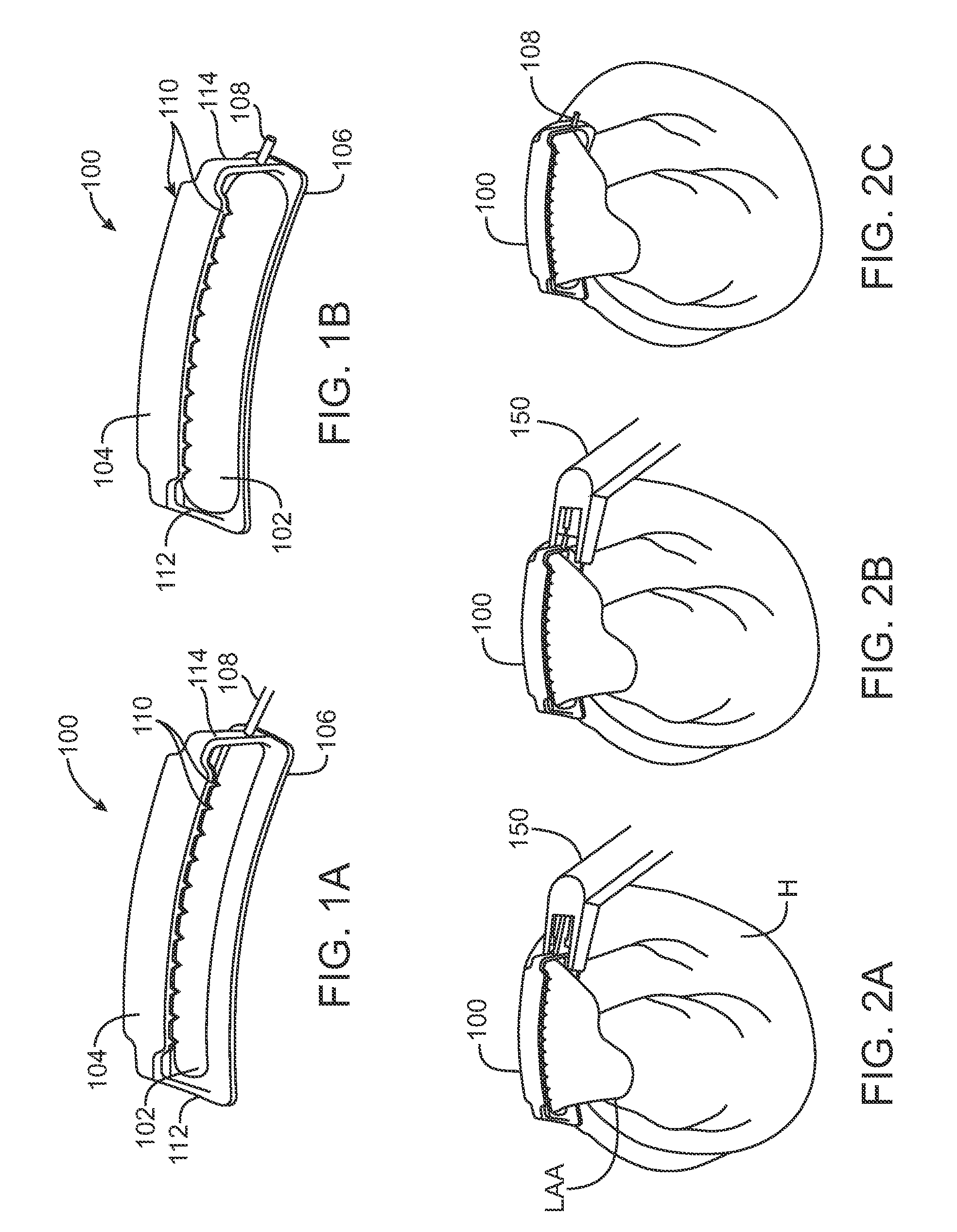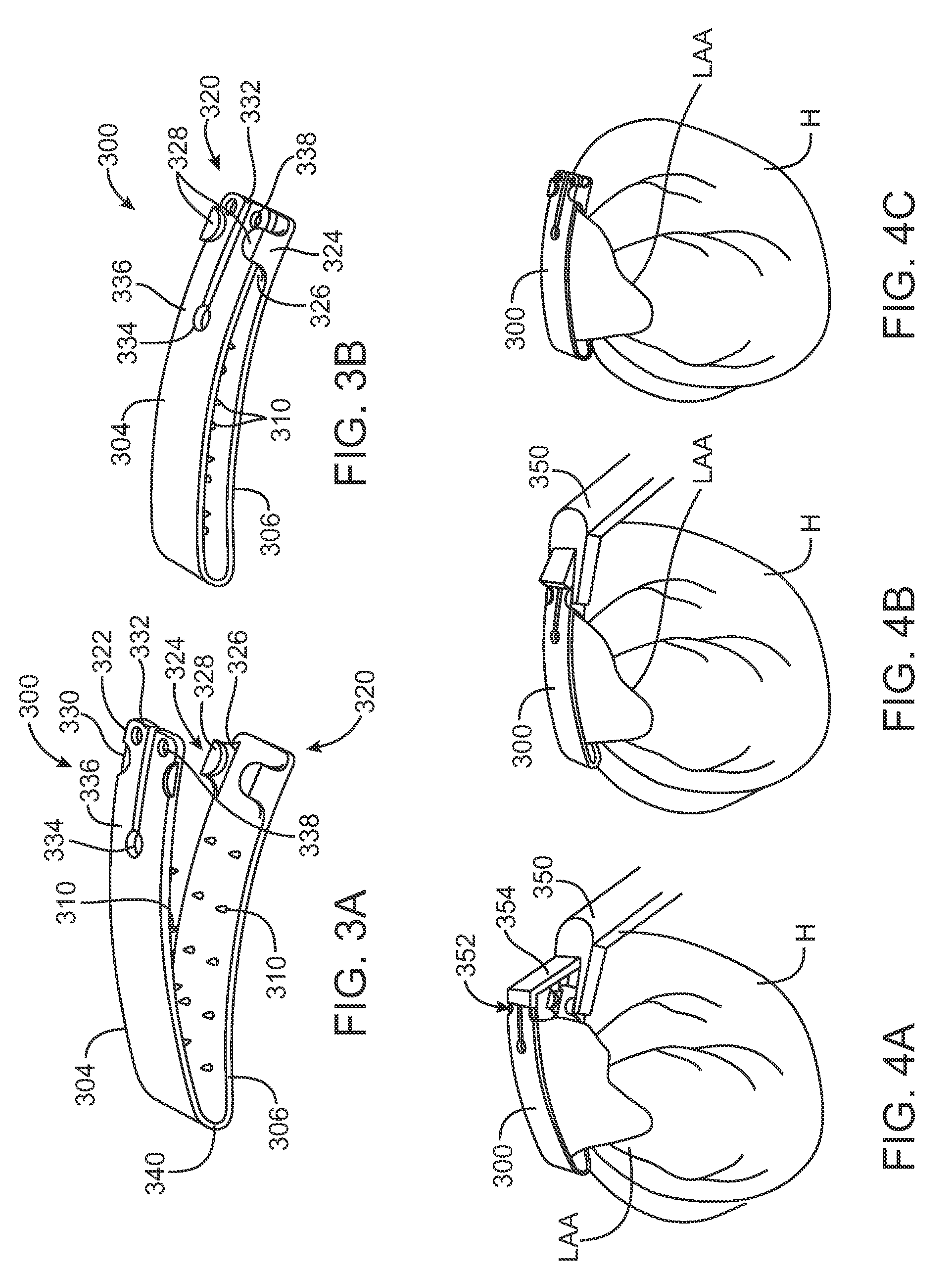Left atrial appendage devices and methods
a technology of appendage and left atrial, which is applied in the field of appendage and methods for manipulating, positioning, clamping and stapling tissue, can solve the problems of reducing the heart's ability to properly function as a pump, increasing the risk of acquiring a number of potentially deadly complications, and affecting the quality of life, so as to prevent clots
- Summary
- Abstract
- Description
- Claims
- Application Information
AI Technical Summary
Benefits of technology
Problems solved by technology
Method used
Image
Examples
Embodiment Construction
[0035]FIGS. 1A and 1B show perspective views of an inflatable clip 100 having a balloon 102 between the two plates 104, 106 forming the arms of the clip 100. FIG. 1A shows the inflatable clip 100 prior to inflation. In FIG. 1B, the balloon 102 has been inflated and the inflation tube 108 is has been crimped to provide permanent closure. In this embodiment, the top plate 104 of the inflatable clip 100 has one, two or more rows of traction tines or teeth 110 extending downward. The teeth 110 are located at or near the edge of the top plate 104 to allow the teeth 110 to puncture the left atrial appendage LAA on either side of the balloon 102 when the clip 100 is moved to the closed position. The balloon 102 is attached to the lower plate 106 of the inflatable clip 100. The balloon 102 extends along most or all of the length of the clip 100. The balloon 102 is sized and located such that as the balloon 102 inflates, the edges of the balloon 102 do not extend into the path of the teeth 1...
PUM
 Login to View More
Login to View More Abstract
Description
Claims
Application Information
 Login to View More
Login to View More - R&D
- Intellectual Property
- Life Sciences
- Materials
- Tech Scout
- Unparalleled Data Quality
- Higher Quality Content
- 60% Fewer Hallucinations
Browse by: Latest US Patents, China's latest patents, Technical Efficacy Thesaurus, Application Domain, Technology Topic, Popular Technical Reports.
© 2025 PatSnap. All rights reserved.Legal|Privacy policy|Modern Slavery Act Transparency Statement|Sitemap|About US| Contact US: help@patsnap.com



